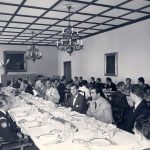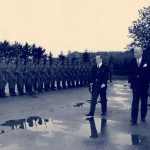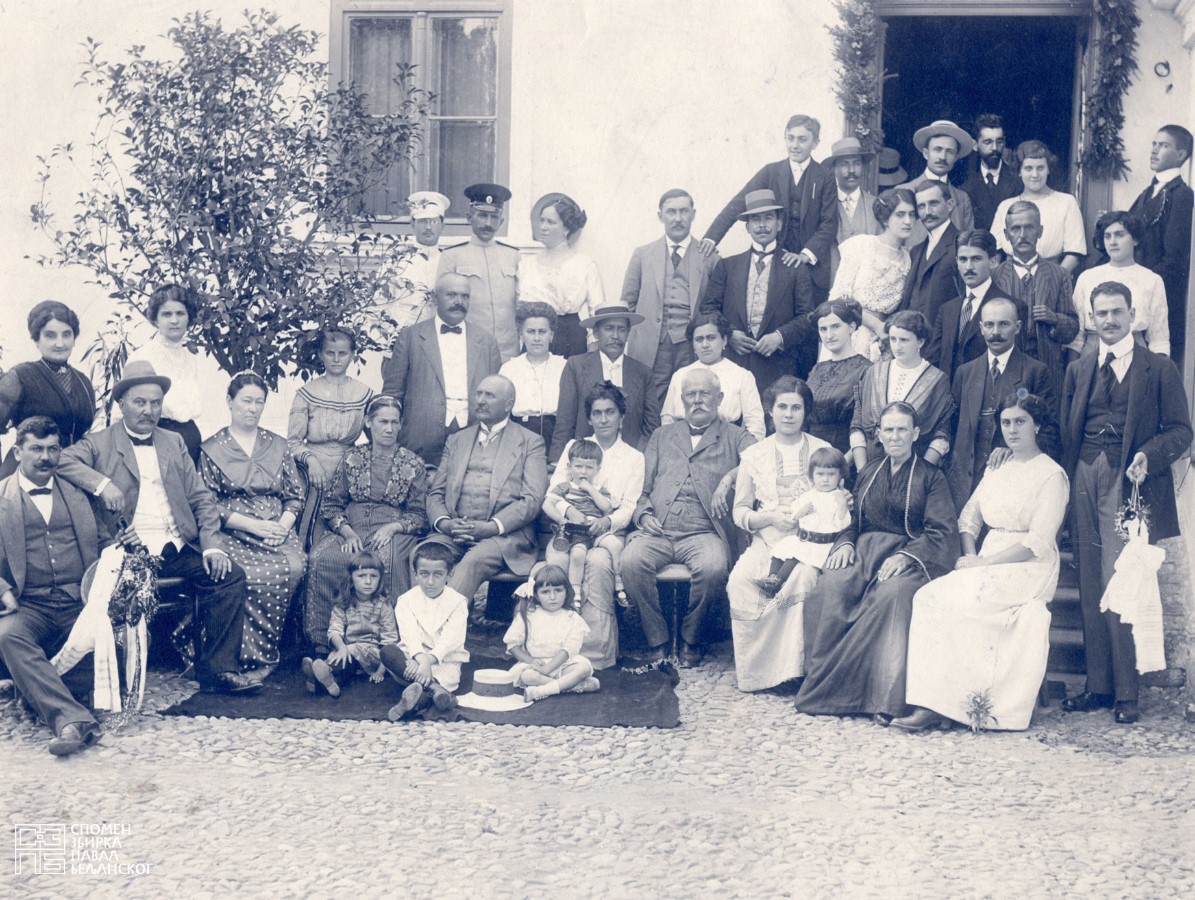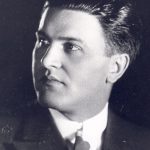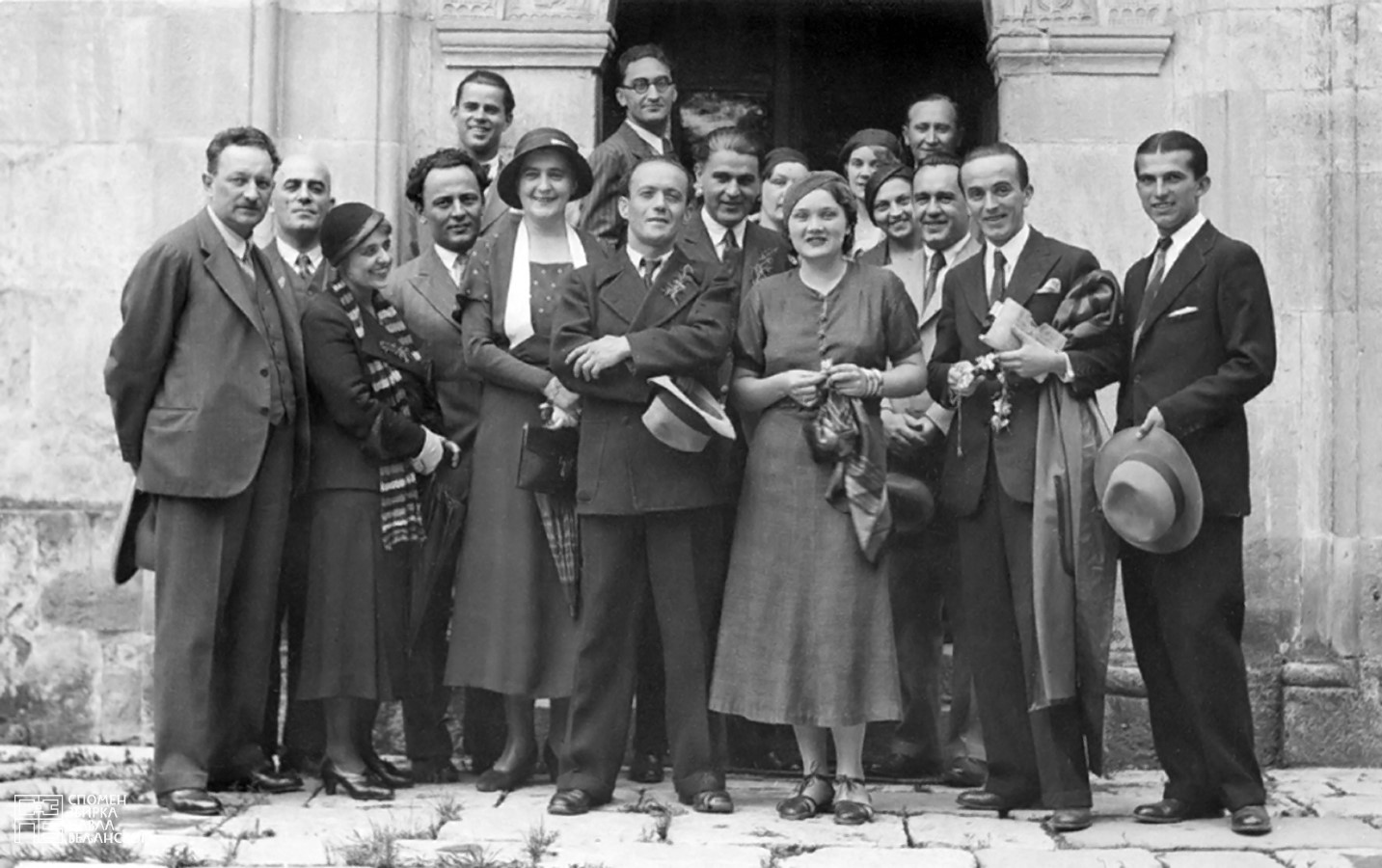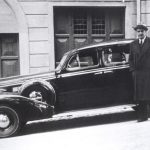As a prosperous diplomat, Pavle Beljanski indebted Serbian people, owing especially to his rare and genuine passion for collecting works of art and his refined taste that helped him make the selection. Even more than his own profession – diplomacy, he most of all admired the world of art, museums, sightseeing, antique shops and galleries, studios and places where artists exhibited. His affection for art and adoration for collecting were formed gradually and simultaneously with his profession.
Background, Education, The First World War
It is assumed that the Beljanski family came to Vojvodina during the Great Migration of the Serbs in 1690 from the village of Beljani, near Valjevo. In the oldest recorded data, we find Pavle Beljanski’s great-grandfather, the priest Nikola, whose father’s name was Arsenije. According to the customs of that time, the eldest son in the family inherited his father’s job as well as grandfather’s name. It so happened that Nikola’s descendants, and the ancestors of Pavle Beljanski along that line, were Orthodox priests in the Bačka village of Gospodjinci. Pavle’s father Svetozar Beljanski (1851–1921), who was also born there, substituted the hereditary clerical vocation with a doctor’s, having completed his medical studies in Vienna. He got his first job in Sremski Karlovci, where he married Milana Kostić (1869–1942), the daughter of the famous local merchant Konstantin Kosta Kostić. Pavle’s two sisters, Aleksandra Sanda (1888–1944) and Ana Anka (1890–1944), were also born there. Like many prominent Serbs from the Dual Monarchy, Pavle’s parents moved to Serbia in 1892. Svetozar Beljanski became a physician in Veliko Gradište and soon had a son, Pavle (June 19). After two years, the family moved to Svilajnac, the birthplace of the youngest son Nikola (1895–1944).
Pavle Beljanski finished primary school in Svilajnac. He continued his education in Belgrade and in 1910 he passed the graduation exam at the First Belgrade Gymnasium. In the same year, he enrolled at the Faculty of Law. Studies are interrupted due to the outbreak of the First World War. In September 1914, he joined the Student Battalion in Skopje. During the retreat through Albania, he contracted tuberculosis and was released from participating in war operations in Shkodra, in December 1915. He spent the remainder of the winter and spring in Corfu, from where, since he was discharged in July 1916, he was sent to study in France. He enrolled in law studies at the Sorbonne, and graduated on July 17, 1917. On June 15 of the following year, he received his Master’s Degree and immediately applied for a doctorate in diplomatic and consular profession.
Young Diplomat
Pavle Beljanski left his education in Paris due to an employment opportunity at the Ministry of Foreign Affairs. In the spring of 1919, he was hired as a first category scribe of the Royal Embassy in Stockholm, and after two months was promoted to the Embassy secretary. The diplomatic career enabled Beljanski to explore the cultural heritage preserved in European capitals, which greatly affected his commitment to passionate collecting of valuable objects of fine and applied arts.
Beljanski received the news of his father’s death in Berlin (1921), where he was posted after Stockholm and Warsaw. After Berlin, Beljanski returned to Warsaw, and then to Vienna. The latter event would play a crucial role in his orientation towards collecting artworks. Although he had already started buying antiques in Berlin for his Belgrade apartment, he would indulge this passion even more while staying in Vienna (1923–1925). He had support of his paternal aunt Sofija Đukić, widow of the famous general Avram Đukić and a great connoisseur of art and a collector herself. At the time, Beljanski realized that his affection for collecting should adopt more structured approach. Remembering his stay in Vienna, he noted: “Fortunately, in 1923, I left this futile job and decided to dedicate myself exclusively to collecting domestic works of art.” He was encouraged in this endeavour by the Croatian painter Marino Tartaglia, who painted his portrait in 1923, and this piece of art, entitled Young Diplomat, was awarded a silver medal at the International Exhibition in Barcelona (1929). Although this painting had not been part of the legacy, the collector’s heirs donated it to the Pavle Beljanski Memorial where it stands displayed at the permanent exhibition among other valuable private items. In the early 1920s, the painting certainly inspired Beljanski to dedicate himself to collecting works by contemporary artists from the country he used to represent in Europe as its emissary.
Pavle Beljanski – A Friend of Artists
After moving from Vienna to Belgrade at the end of 1925, Beljanski expanded his circle of acquaintances with young artists, which was beneficial for the formation of the collection. Most of these artists were educated at the academies of European cities like Munich, Vienna, Budapest, Berlin, Rome, Florence, Prague, Krakow, and most of all, Paris. When Pavle Beljanski was transferred to Paris, at the beginning of 1929, many Yugoslav artists, such as Sava Šumanović, Petar Dobrović, Milo Milunović, Jefto Perić, Stojan Aralica, Petar Lubarda, had already been living in this painting metropolis and had been a part of the international “Paris school”. Most of them lived in the modest Parisian suburb of Malacoff, and few well-off individuals, on the famous Montparnasse. They exhibited at the Bing Gallery, at Zborovski’s or the Bernheim brothers. They would often spend their last dime on models like the famous Kiki of Montparnasse, Thérèsa Treize, Aicha, or on beverage at La Coupole, Le Dôme, and La Rotonde. The reputable Parisian critic Florent Fels wrote this in the prestigious magazine L’Art vivant: “Modigliani appeared in the evening with a sash of fog or a halo of an electric lamp and ruled like a prince over our congregation reserved only for Kisling and his wife Renée, Šumanović, Derain…”. Besides Šumanović, other artists were also noticed: Milan Konjović received extraordinary praise for the authenticity of the expression, Bourdel Museum keeps artworks by Kosta Hakman, Zora Petrović, Risto Stijović, Petar Lubarda, Marko Čelebonović, three paintings by Milunović and other artists whose pieces had become part of the collection, they won awards at the Exposition Universelle in Paris (1937) … During the 1930s, our artists were also present at important exhibitions in London, Amsterdam, Brussels, Prague, Rome.
Pavle Beljanski gained the reputation of a refined collector and was known for providing material aid to artists, especially in the period between the two world wars. He became a close friend of Kosta Hakman, Petar Lubarda, Jefto Perić, Nedeljko Gvozdenović, Milan Konjović, while also being the best man to Lubarda, Milunović and Hakman. While he was moving from Paris to Belgrade, in 1931, the diplomat Beljanski brought paintings by the artists he befriended in Paris, as well as several chests of books.
Immaculate Sense of True Art
As the collection was growing during the inter-war period, Beljanski had a vision of placing it into a museum. By selecting the works of the artists whose quality was confirmed at exhibitions in the country and abroad, he created an anthology of the national fine arts. He came up with this idea immediately after the First World War, which he would recall many years later: “If the artwork I acquired is really Titian and if I am able to acquire more such valuable paintings, it will still be a fragmentary collection belonging to someone else.” […] We should collect artworks created by our people, help our artists, preserve their creations – only that could be viewed as complete and belonging to me.”
Beljanski devoted himself most intensively to enlarging the collection during the 1930s. Since 1935, when, as a diplomat in Rome, he authorized the painter, Jefto Perić, to select and buy artworks for the collection. Beljanski considered the time spent in Rome to be the most beautiful period of his life. He visited antique shops, ancient ruins, visited museums and galleries. The high incomes of an advisor in the Rome Embassy of the Kingdom of Yugoslavia, especially after taking over the duty of charge d’affaires (1937) during the absence of the ambassador Jovan Dučić, enabled him to buy a dozen of artworks for his collection of European painting. Many distinguished guests from the Kingdom of Yugoslavia, such as Stevan Hristić, Vladimir Ribnikar or Isidora Sekulić, could count on Beljanski’s hospitality in Rome. He also welcomed painters and helped organize exhibitions, especially the Exhibition of Contemporary Yugoslav Art in Rome (1937). Distinguishing Beljanski as a true aesthete and an excellent collector, Milan Kašanin, the director of the Museum of Prince Pavle in Belgrade, selected and wrote texts for the newly founded magazine Umetnički pregled (1937), asking him to give his opinion on the first issue of this paper.
With a noble effort to collect and preserve the extraordinary artworks created by his people, Beljanski already possessed a coherent, complete collection before the outbreak of the Second World War.
Occupation Years
Upon his return from Rome to Belgrade in 1940, Pavle Beljanski witnessed the political, diplomatic and military collapse of the Kingdom of Yugoslavia; he retired the following year.
The occupation brought Beljanski and the artists who lived in Belgrade even closer. He took his gramophone to the house of the sculptor Sreten Stojanović in Profesorska kolonija neighbourhood, where on certain days he brought records from his rich music collection and organized chamber concerts of classical music.
The attic of the Pavlović family home in Gospodar Jevremova Street, the same street where Pavle Beljanski lived, which served as a studio of the painter Leposava Bela St. Pavlović, was also a place to meet. Besides Beljanski, Bela’s guests were also Belgrade artists and intellectuals. She designed a special album containing the works by her friends-artists created during such occasions. In 2000, the painter donated this scrapbook to the Memorial Collection in memory of her friendship with Pavle Beljanski.
Already during the war, Beljanski had plans to build a family home in Belgrade and an exhibition space for his paintings. However, until the end of the war they remained hidden in crates under a pile of coal in the basement of the building in the centere of Belgrade where he used to live. During the Allied bombing of Svilajnac on September 24, 1944, the house where his family had lived for decades was demolished, killing seven of Pavle’s relatives. Their deaths prompted Beljanski to think of donating the collection to the state in memory of the deceased family members.
A Gift to Serbian People
After the end of the Second World War, in February 1945, Beljanski received an invitation from the Ministry of Foreign Affairs to manage the establishment of the Protocol Service; the following year he gave lectures at the School of Diplomacy. This position determined his social status in the new circumstances while old and never broken ties with the artists only contributed to determining the further destiny of the collection itself. The long-standing friendship with Milan Konjović resulted in the first public presentation of the Pavle Beljanski’s collection in Sombor: The City Museum and Library, managed by Konjović, were ceremoniously opened by exhibiting 67 works from the collection.
The first decade after the Second World War would be remembered by the establishment of strong diplomatic partnerships with other countries and frequent foreign visits to Belgrade. Beljanski received the title of Minister Plenipotentiary and the position of Chief of Protocol (1954), as well as numerous decorations from Poland, Ethiopia, Egypt and Greece. After Sombor, the exhibition of the collection moved to the Belgrade City Museum (1952–1957). The intention to donate the collection to this institution did not come to its fruition. The desire to fuse his greatest life work, the anthology of the national modern art, with the motherland of his ancestors, led Pavle Beljanski to choose Vojvodina as a residing place for his collection. On November 18, 1957, he signed a Gift Agreement with the Executive Council of the Autonomous Province of Vojvodina, which also includes the dedication of the donor, which welcomes every visitor of The Memorial Collection in the reception hall of the building:
“This collection of the works of art, which I bequeath to the Serbian people, and which I have collected with a firm belief in its creative powers, I dedicate to the memory of my ancestors who persevered in the century-long struggle for the freedom and independence of their homeland, to the memory of my parents, Svetozar and Milana, who had served it with devotion, the memory of my brother Nikola, sisters Aleksandra and Anka and my brother-in-law Milan, who lost their lives in the wars of 1914/18 and 1941/45. Pavle Beljanski.”



